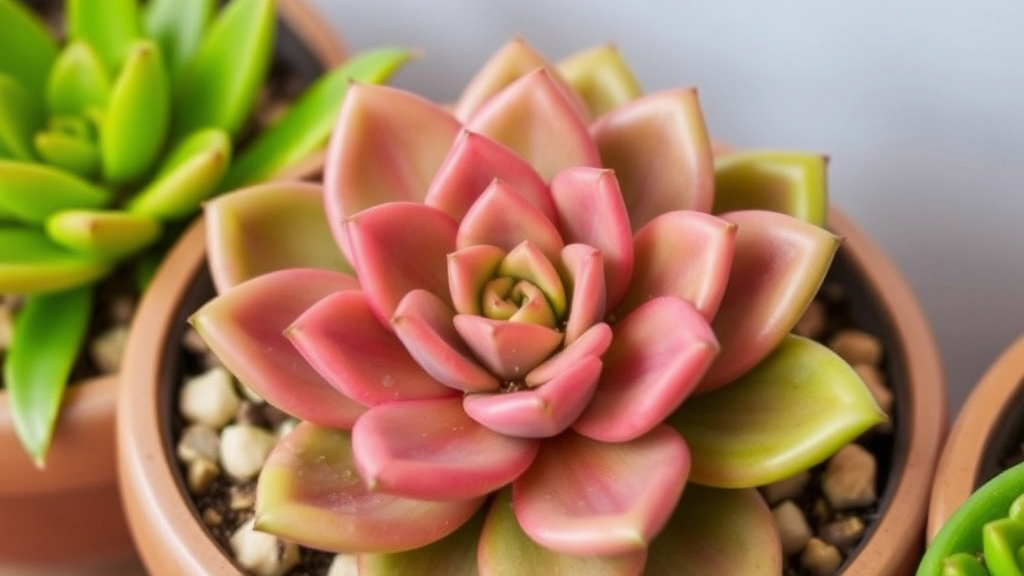Caring for Your Kalanchoe Succulent
If you’re wondering how to care for a Kalanchoe succulent, you’ve come to the right place. As a plant enthusiast myself, I know that understanding the basics is crucial. Let’s dive into the essentials: light, water, temperature, and soil. These elements are the foundation for keeping your Kalanchoe healthy and vibrant.
Essential Care Tips
- Light: Ensure your Kalanchoe gets plenty of bright, indirect sunlight.
- Water: Overwatering is a common mistake, so let the soil dry out between waterings.
- Soil: Use a well-draining soil mix to prevent root rot.
- Temperature: Keep your plant in a warm environment, ideally between 60-85°F.
With these tips, you’ll be well on your way to mastering Kalanchoe care.
Ideal Light Conditions for Kalanchoe
When it comes to nurturing your Kalanchoe, one of the most pressing concerns is its light requirements. Many enthusiasts worry about whether their plant is receiving the right amount of sunlight, as this can significantly impact its health and blooming potential.
Optimal Light Exposure
Kalanchoe thrives in bright, indirect sunlight. Here are some key points to consider:
- Direct Sunlight: While Kalanchoe can tolerate some direct sunlight, especially in the morning, too much can scorch its leaves.
- Window Placement: A south-facing window is ideal, providing ample light without the risk of overheating.
- Artificial Light: If natural light is limited, consider using grow lights to supplement. Aim for 12-14 hours of light daily.
Signs of Insufficient Light
If your Kalanchoe is not getting enough light, you may notice:
- Leggy Growth: Stretched stems and sparse leaves indicate a desperate search for light.
- Poor Blooming: Fewer flowers or a lack of vibrant colour can signal inadequate exposure.
Adjusting Light Conditions
Should you find your Kalanchoe struggling, here are some steps to rectify the situation:
- Rotate the Pot: Every few weeks, rotate your plant to ensure even light distribution.
- Move Closer to Light Source: Gradually relocate your Kalanchoe closer to the window or light source, but avoid sudden changes.
For more detailed information on maintaining the health of your Kalanchoe, check out our guide on why Kalanchoe leaves might be dying and solutions to fix it. Additionally, if you are struggling with flowering issues, our tips on why Kalanchoe might not be flowering can help you troubleshoot and enhance blooming.
Best Soil Mix for Healthy Growth
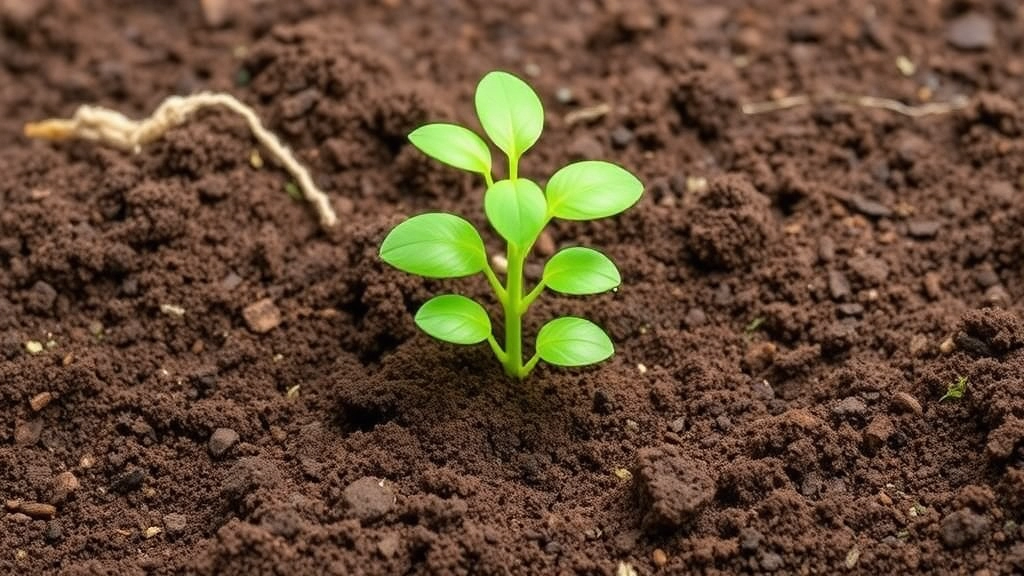
So, you’ve got your Kalanchoe and you’re wondering what type of soil will keep it thriving, right?
Choosing the right soil mix is crucial for your plant’s health.
The Ideal Soil Mix
Kalanchoe loves well-draining soil. Here’s what I recommend:
- Cactus Mix: This is a great base as it’s designed for plants that don’t like sitting in water.
- Perlite or Pumice: Adding about 20-30% of either of these helps with drainage and aeration.
- Peat Moss: A little peat can retain moisture without making the soil soggy.
Mix these ingredients together, and you’ll have a fantastic home for your Kalanchoe.
Why Drainage Matters
Kalanchoe is a succulent, which means it stores water in its leaves.
If the soil retains too much moisture, it can lead to root rot.
A well-draining mix ensures your plant gets the moisture it needs without drowning.
Pot Selection
When you’re ready to pot your Kalanchoe, opt for a pot with drainage holes.
This allows excess water to escape, keeping the roots happy.
Watering Guidelines: How to Avoid Overwatering
Many Kalanchoe owners often find themselves grappling with the question: “How much water does my Kalanchoe really need?”
Understanding the watering needs of Kalanchoe is crucial for its health and longevity. Overwatering is one of the most common mistakes, leading to root rot and other issues. Here are some straightforward guidelines to help you strike the right balance:
- Check the Soil: Always feel the top inch of soil. If it’s dry, it’s time to water. If it’s still moist, wait a few more days.
- Watering Frequency: Generally, watering every 2-3 weeks is sufficient during the growing season (spring and summer). In the dormant months (autumn and winter), reduce this to once a month.
- Type of Water: Use room temperature water. Cold water can shock the plant, while distilled or rainwater is ideal as it’s free from chemicals.
- Drainage is Key: Ensure your pot has drainage holes. This allows excess water to escape, preventing soggy roots.
- Watering Technique: Water thoroughly until it drains out of the bottom. This encourages deep root growth.
- Signs of Overwatering: Look out for yellowing leaves or a mushy stem. If you notice these signs, cut back on watering immediately.
By following these guidelines, you’ll keep your Kalanchoe happy and thriving. For more detailed care tips, check out our Ultimate Guide to Flowering Kalanchoe Care. If you notice any unusual symptoms, such as yellowing leaves, our article on Why Are My Kalanchoe Leaves Turning Soft? can help you troubleshoot the problem.
Fertilizing Kalanchoe for Optimal Blooming
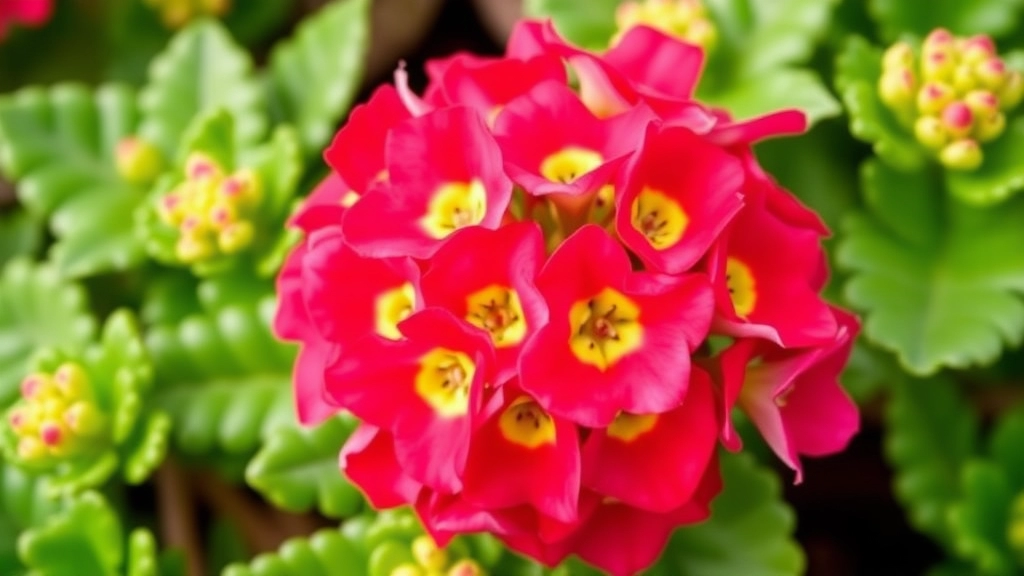
When it comes to nurturing your Kalanchoe, one of the most pressing questions is how to ensure it blooms beautifully.
Understanding Fertilizer Needs
Kalanchoe thrives with the right balance of nutrients. Here’s how to achieve optimal blooming through effective fertilization:
- Type of Fertilizer: Use a balanced, water-soluble fertilizer with an NPK ratio of 10-10-10 or 20-20-20. This ensures your plant receives equal parts of nitrogen, phosphorus, and potassium.
- Frequency: Fertilize every 4-6 weeks during the growing season (spring and summer). Reduce feeding in the fall and winter when the plant enters dormancy.
- Dilution: Always dilute the fertilizer to half the recommended strength. This prevents root burn and promotes healthy growth.
- Application Method: Apply the fertilizer to moist soil to enhance absorption. Avoid getting it on the leaves to prevent potential burn.
Signs of Nutrient Deficiency
Keep an eye out for signs that your Kalanchoe may need more nutrients:
- Pale Leaves: Indicates a nitrogen deficiency.
- Poor Blooming: Lack of flowers may suggest insufficient phosphorus.
By staying attuned to your plant’s needs, you can ensure it receives the right nutrients for vibrant blooms.
When caring for Kalanchoe, one of the most frequent concerns is ensuring the right temperature and humidity.
### What temperature does Kalanchoe thrive in?
Kalanchoe plants prefer a warm environment, ideally between **18°C and 24°C** (65°F to 75°F).
– **Nighttime temperatures** can drop slightly, but avoid going below **10°C** (50°F).
– **Sudden temperature changes** can stress the plant, leading to wilting or dropping leaves.
### Humidity levels also play a role.
Kalanchoe enjoys moderate humidity but can tolerate lower levels typical of indoor settings.
– Aim for **40% to 60%** humidity.
– If your home is particularly dry, especially in winter, consider using a humidifier or placing a tray of water near the plant to increase moisture.
### Tips for Maintaining Ideal Conditions:
– **Avoid drafts:** Keep Kalanchoe away from open windows and air conditioning vents.
– **Use a thermometer and hygrometer:** These tools can help you monitor the temperature and humidity levels accurately.
– **Group plants together:** This can create a microenvironment with slightly higher humidity.
Understanding these temperature and humidity preferences will set the stage for your Kalanchoe’s health and vitality. For more detailed care tips, you might find our [complete care guide for Kalanchoe Blossfeldiana](https://planthq.org/complete-care-guide-for-kalanchoe-blossfeldiana-succulent/) very useful. Additionally, if you’re dealing with specific issues like brown spots on the leaves, our guide on [causes and solutions for brown spots on Kalanchoe leaves](https://planthq.org/causes-and-solutions-for-brown-spots-on-kalanchoe-leaves/) can provide targeted advice.
How to Encourage Reblooming
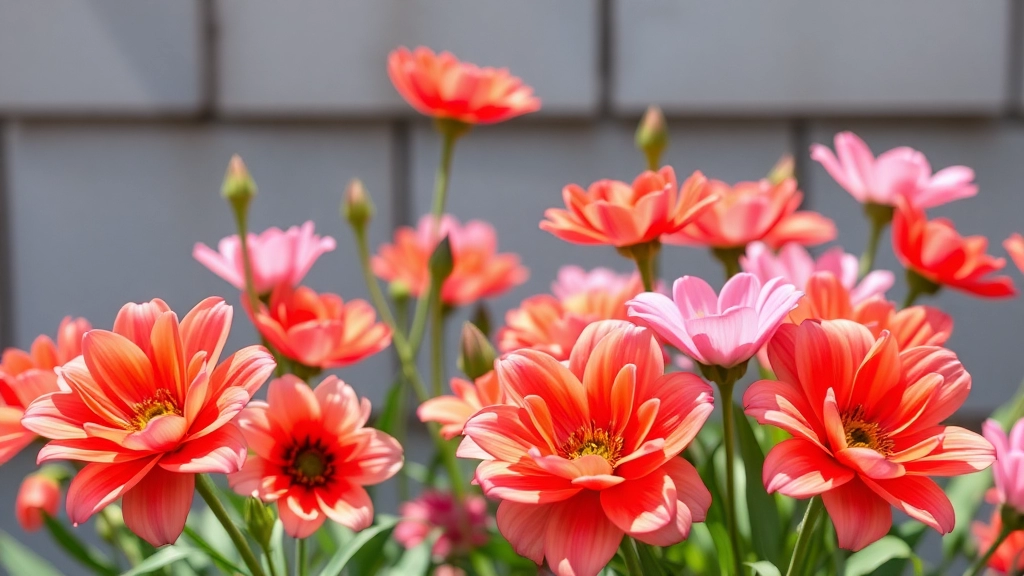
Are you eager to see your Kalanchoe burst into bloom again? I get it—those vibrant flowers can really brighten up your space.
To encourage your Kalanchoe to rebloom, there are a few key steps you can take. Let’s break it down:
- Light Exposure: Make sure your plant gets plenty of bright, indirect sunlight. This is crucial for flower production. If it’s not getting enough light, those blooms might just stay hidden.
- Watering Schedule: After the initial blooming period, reduce watering. Let the top inch of soil dry out before watering again. This mimics the plant’s natural cycle and encourages it to focus on producing flowers rather than just leaves.
- Temperature Control: Kalanchoe loves warm weather. Keep it in a spot where temperatures are between 18-24°C (65-75°F). Avoid cold drafts; they can stress the plant.
- Fertilizing Wisely: Use a balanced, water-soluble fertiliser every few weeks during the growing season. This gives your plant the nutrients it needs to produce those stunning flowers.
- Pruning: After blooming, trim away any dead flowers and leaves. This not only keeps your plant looking tidy but also encourages new growth.
- Rest Period: Give your Kalanchoe a rest period. After blooming, allow it to rest for about six weeks with minimal water and no fertiliser. This helps it gather strength for the next round of blooms.
After ensuring your Kalanchoe receives the right light and soil, it’s time to focus on pruning and deadheading to promote healthier growth.
Many plant enthusiasts wonder: **How do I keep my Kalanchoe looking its best?** Pruning and deadheading are essential practices that not only enhance the plant’s appearance but also encourage new blooms.
### Why Prune?
– **Encourages New Growth**: Pruning stimulates fresh growth by removing old, tired leaves and stems.
– **Prevents Disease**: Cutting away dead or damaged parts helps reduce the risk of pests and diseases.
– **Shapes the Plant**: Regular pruning helps maintain a tidy shape, making your Kalanchoe look its best.
### When to Prune
– **After Blooming**: The ideal time to prune is right after the flowering period. This allows the plant to focus its energy on new growth.
– **Seasonal Maintenance**: Light pruning can be done throughout the year to keep the plant healthy.
### How to Prune
1. **Use Clean Tools**: Always use sharp, sterilized scissors or pruning shears to avoid spreading diseases.
2. **Remove Dead Leaves**: Start by cutting away any yellow or brown leaves at the base.
3. **Trim Excess Growth**: Cut back any leggy stems to encourage bushier growth.
4. **Shape the Plant**: Aim for a balanced shape by selectively trimming branches.
### Deadheading for Blooms
Deadheading is the process of removing spent flowers. This encourages the plant to produce new blooms rather than expend energy on seed production.
– **Identify Spent Flowers**: Look for flowers that have wilted or turned brown.
– **Pinch or Cut**: Use your fingers or scissors to remove the spent flower just above the first set of healthy leaves.
By incorporating these practices, you’ll not only keep your Kalanchoe thriving but also enhance its beauty. For more detailed care tips, check out our [complete guide to Kalanchoe Blossfeldiana hybrid care](https://planthq.org/ultimate-guide-to-kalanchoe-blossfeldiana-hybrid-care/) and learn [how to care for Kalanchoe after blooming](https://planthq.org/care-tips-for-kalanchoe-after-blooming/).
Repotting and Pot Selection Tips for Kalanchoe
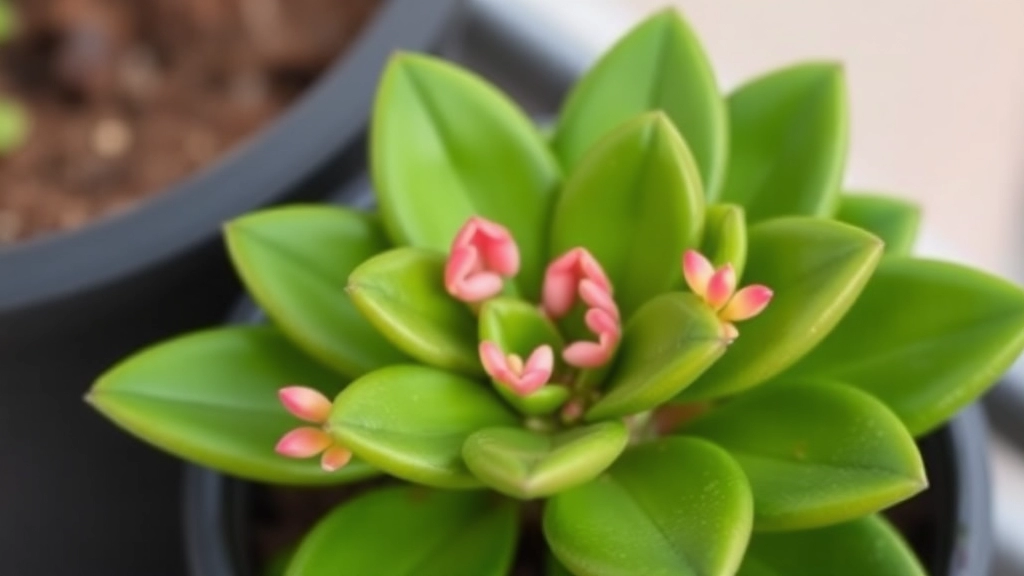
So, you’ve got your Kalanchoe thriving, but you’re wondering when and how to repot it?
Repotting is crucial for keeping your plant healthy and happy.
When to Repot:
- Spring is the ideal time.
- If you see roots poking out of the drainage holes, it’s time to give your plant a new home.
Choosing the Right Pot:
- Size Matters: Go for a pot that’s just one size bigger. Too big, and you risk overwatering.
- Drainage is Key: Always choose pots with drainage holes. Kalanchoe hates sitting in water.
- Material: Terracotta pots are great as they allow moisture to escape. Plastic pots can work too but ensure good drainage.
Repotting Steps:
- Prepare the New Pot: Add a layer of fresh soil mix at the bottom.
- Gently Remove the Plant: Loosen the roots and shake off excess soil.
- Place in New Pot: Position it in the centre and fill with soil, leaving about an inch from the top.
- Water Lightly: Just a sprinkle to help settle the soil.
Aftercare:
- Keep it out of direct sunlight for a week while it adjusts.
- Resume your regular care routine after that.
Common Pests and How to Prevent Them
As we delve deeper into the care of your Kalanchoe, it’s essential to address the common pests that can threaten its health.
Propagating Kalanchoe from Cuttings
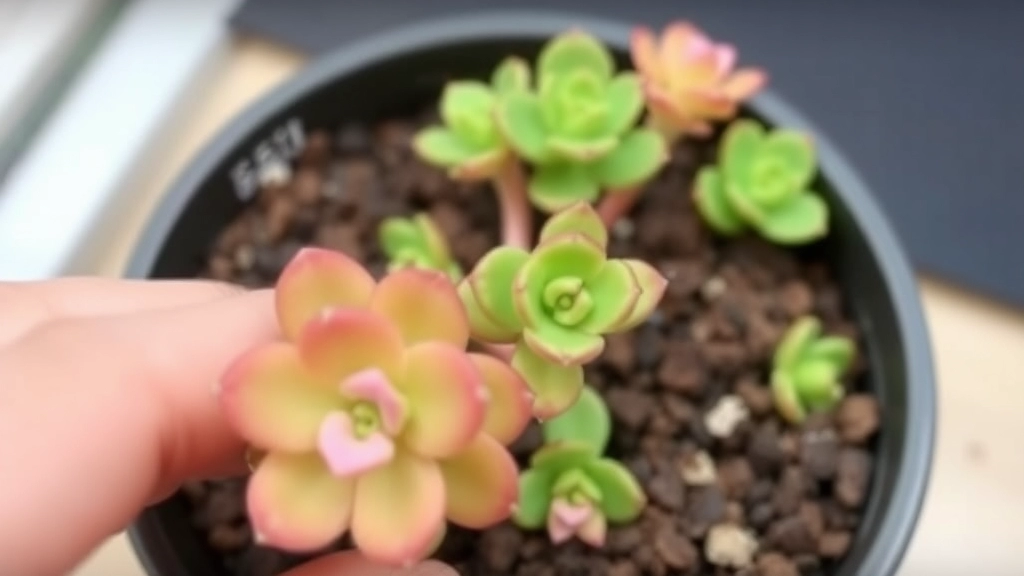
So, you’ve got a flourishing Kalanchoe and you’re wondering how to multiply that beauty? You’re in luck! Propagating Kalanchoe from cuttings is not only simple but also a fun way to expand your plant collection.
Why Propagate?
Maybe you want to share with friends or fill your home with more greenery. Whatever your reason, it’s super rewarding to see those little cuttings grow into full plants.
Steps to Propagate Kalanchoe
- Choose a Healthy Stem
Look for a healthy stem with a few leaves. Avoid any that look sickly or have pests. - Cut the Stem
Use clean, sharp scissors to take a cutting about 3-4 inches long. Make the cut just below a leaf node. This is where roots will sprout. - Let It Callous
Place the cutting in a dry spot for a day or two. This helps the cut end to callous over, reducing the risk of rot when planted. - Prepare Your Soil
Use a well-draining soil mix. A cactus or succulent mix works wonders. You can also create your own by mixing potting soil with sand or perlite. - Plant the Cutting
After the callousing period, gently insert the cutting into the soil, burying it about an inch deep. - Water Sparingly
Give it a light watering, but don’t soak it. Too much water can lead to rot. - Create a Humid Environment
Cover the pot with a plastic bag or a clear container to keep humidity high. Just make sure it gets some air circulation to avoid mold. - Place in Bright, Indirect Light
Find a spot that gets plenty of bright, indirect sunlight. Too much direct sun can scorch the cutting. - Wait for Roots to Develop
In a few weeks, you should see new growth. This means roots are forming! You can gently tug on the cutting to check for resistance.
Tips for Success
- Be Patient: Not every cutting will take, so don’t be discouraged if some don’t root.
- Use Clean Tools: Always use clean scissors to prevent disease.
- Timing: Spring or early summer is the best time for propagation.
Troubleshooting Common Kalanchoe Problems
As we delve deeper into the care of Kalanchoe, it’s crucial to address the common issues that may arise. Understanding these problems is key to maintaining a thriving plant.
1. Leaf Discoloration
If you notice your Kalanchoe leaves turning yellow or brown, it could be a sign of overwatering or insufficient light.
- Overwatering: Check the soil. If it’s soggy, reduce watering frequency.
- Insufficient Light: Move your plant to a brighter location, ensuring it receives ample indirect sunlight.
2. Wilting Leaves
Wilting can be alarming, but it’s often a sign of either underwatering or overwatering.
- Underwatering: If the soil is dry, give your plant a good drink.
- Overwatering: If the soil is wet, allow it to dry out before watering again.
3. Stunted Growth
If your Kalanchoe isn’t growing as expected, consider the following:
- Nutrient Deficiency: Use a balanced fertiliser during the growing season.
- Pot Size: Ensure your plant isn’t root-bound. If the roots are circling the pot, it may be time to repot.
4. Flower Drop
If flowers are dropping prematurely, this could indicate stress.
- Temperature Fluctuations: Keep your Kalanchoe in a stable environment.
- Low Humidity: Increase humidity around the plant by misting or placing a tray of water nearby.
5. Pests
Common pests like aphids or mealybugs can affect your Kalanchoe.
- Regular Inspection: Check the undersides of leaves for signs of infestation.
- Natural Remedies: Use insecticidal soap or neem oil to treat affected areas. For more detailed information, refer to our pest control guide.
FAQs on How to Care for a Kalanchoe Succulent
What is the best soil mix for Kalanchoe succulents?
Kalanchoe thrives in well-draining soil. A recommended mix includes:
- Cactus Mix: Ideal as a base for plants that dislike sitting in water.
- Perlite or Pumice: Adding 20-30% helps with drainage and aeration.
- Peat Moss: Retains moisture without making the soil soggy.
Why is drainage important for Kalanchoe?
Kalanchoe stores water in its leaves. Excess moisture in the soil can lead to root rot. A well-draining mix ensures the plant gets the moisture it needs without drowning.
How often should I fertilize my Kalanchoe?
Fertilize every 4-6 weeks during the growing season (spring and summer). Reduce feeding in the fall and winter when the plant enters dormancy. Use a balanced, water-soluble fertilizer with an NPK ratio of 10-10-10 or 20-20-20, diluted to half the recommended strength.
What are the signs of nutrient deficiency in Kalanchoe?
Watch for pale leaves, which indicate a nitrogen deficiency, and poor blooming, which may suggest insufficient phosphorus.
How can I encourage my Kalanchoe to rebloom?
To encourage reblooming, ensure your plant gets plenty of bright, indirect sunlight, reduce watering after the initial blooming period, maintain temperatures between 18-24°C (65-75°F), and use a balanced fertilizer during the growing season. Prune dead flowers and leaves, and give the plant a rest period of about six weeks with minimal water and no fertilizer.
When and how should I repot my Kalanchoe?
Repot your Kalanchoe in the spring or when you see roots poking out of the drainage holes. Choose a pot that’s just one size bigger, with drainage holes. Terracotta pots are ideal as they allow moisture to escape. Follow these steps for repotting:
- Prepare the New Pot: Add a layer of fresh soil mix at the bottom.
- Gently Remove the Plant: Loosen the roots and shake off excess soil.
- Place in New Pot: Position it in the center and fill with soil, leaving about an inch from the top.
- Water Lightly: Just a sprinkle to help settle the soil.
After repotting, keep the plant out of direct sunlight for a week while it adjusts, then resume your regular care routine.
How do I propagate Kalanchoe from cuttings?
Follow these steps to propagate Kalanchoe:
- Choose a Healthy Stem: Look for a healthy stem with a few leaves.
- Cut the Stem: Use clean, sharp scissors to take a cutting about 3-4 inches long, just below a leaf node.
- Let It Callous: Place the cutting in a dry spot for a day or two to callous over.
- Prepare Your Soil: Use a well-draining soil mix, such as cactus or succulent mix.
- Plant the Cutting: Insert the cutting into the soil, burying it about an inch deep.
- Water Sparingly: Lightly water the cutting, avoiding soaking.
- Create a Humid Environment: Cover the pot with a plastic bag or clear container for humidity, with some air circulation to avoid mold.
- Place in Bright, Indirect Light: Ensure the cutting gets plenty of bright, indirect sunlight.
- Wait for Roots to Develop: In a few weeks, new growth indicates root formation. Gently tug on the cutting to check for resistance.
For successful propagation, be patient, use clean tools, and propagate in spring or early summer.
References
-
Kalanchoe Plant Care: How To Grow A Kalanchoe
-
How to Grow Kalanchoe Indoors
-
Kalanchoe: Plant Care & Growing Guide
